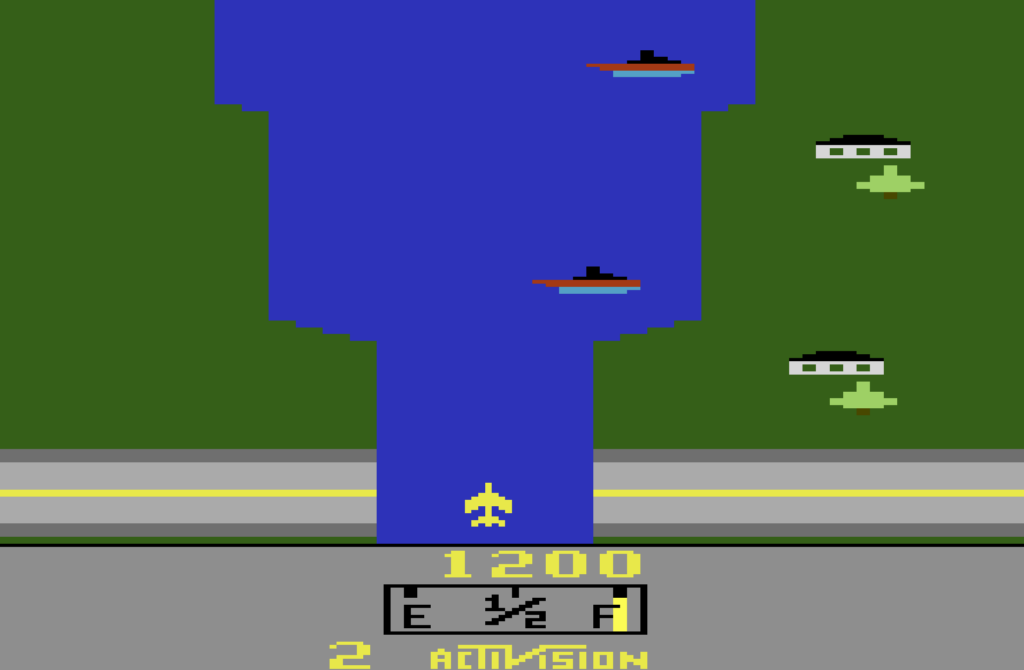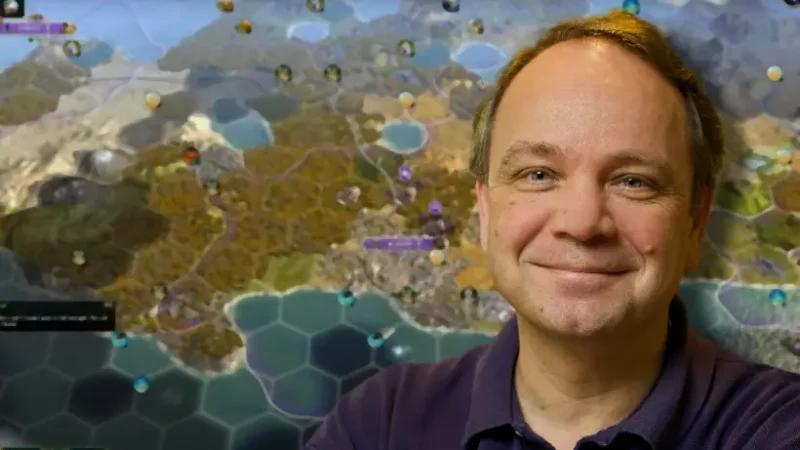Carol Shaw – Pioneering Game Developer

To the best of my memory, River Raid was the first game I ever played. My cousins owned an Atari 2600 and River Raid and Pitfall were their two favorite games to play. My earliest memory of sitting down and playing a game myself was holding that Atari joystick and piloting a jet up a vertical screen, shooting fuel tanks, helicopters, and ships until I hit a riverbank and exploded (this makes sense later). As I went to write a review of River Raid, I learned something interesting while doing some background research. The game was created by groundbreaking developer Carol Shaw, who is known as one of the first female game designers.
Carol Shaw’s Early Life
The daughter of a mechanical engineer, Carol Shaw was born in Palo Alto, CA in 1955. She developed a love for electronics and building early on, playing with electric train sets and building kits. Growing up in the heart of Silicon Valley, Shaw was surrounded by the upcoming tech industry from an early age. Both of her parents urged her to pursue her passions of math and science despite the notion at the time that girls weren’t supposed to be good at math. She would go on to prove a lot of people wrong about that.
After graduating high school, Shaw attended the University of California, Berkeley, where she earned a Bachelor’s degree in Electrical Engineering and Computer Science in 1977. She continued her studies at Berkeley, obtaining a Master’s degree in Computer Science.
Breaking Into the Industry
In the late 1970s, the video game industry was still in its infancy, and few women were involved in game development. Carol Shaw broke new ground when she joined Atari, Inc. right out of college in 1978 as a microprocessor software engineer. Unfortunately, the stigma of being a woman in a male-dominated industry didn’t come without some push-back. Atari President, Ray Kassar, once came by her and said, “Oh, finally! We have a female game designer. She can do interior decorating and cosmetics color matching games!”2 Needless to say, Carol had no interest in those.
Atari and Early Contributions
Shaw’s first project at Atari was the creation of Polo, a product tie-in to Ralph Lauren’s Polo cologne product line. It was never officially launched, but it proved that Carol could program a game from start to finish – something that probably surprised her as well, as she had never created a game before that. Carol would go on to say, “At that time, one person would do the whole game, coding, the graphics, the sound, the gameplay, user interface, everything. Which, if you stop to think about it, it’s silly to think that one person would be good at all aspects of a game.”2

Her first major project that released was 3-D Tic-Tac-Toe for the Atari 2600. Released in 1979, the game was a significant departure from the more action-oriented titles popular at the time like Space Invaders and Galaxian. It showcased Shaw’s ability to innovate and think outside the box, offering players a strategic and intellectual challenge.

Her next project was Video Checkers, also for the Atari 2600. Released in 1980, this game further established Shaw’s reputation as a talented and versatile programmer. She developed a sophisticated AI that provided a challenging opponent for players, demonstrating her technical prowess and creativity. 3D Tic-Tac-Toe and Video Checkers were the first commercial games designed by a woman.3

Activision and River Raid
Carol’s development of Video Checkers caught the eye of Alan Miller, co-founder of Activision, as her code in the game was more sophisticated than the code Alan Miller himself had written into his version of Checkers.4 In 1980, Carol left Atari to join Activision. At Activision, she created what would become her most famous work: River Raid.
Carol had approached Alan Miller about creating a scrolling space game, but he said there were too many space-themed games out there already and that she needed to pick a different theme. She sketched out some concepts on paper and initially tried to make a horizontally scrolling game like Scramble by Konami. However, that concept was scrapped because it would look “very jerky”, so she pivoted and made the game vertically scrolling. Carol set the game in a river and originally the player controlled a boat. However, the boat didn’t look right to her, so she once again pivoted after David Crane, a colleague at Activision, recommended using a jet instead. The game took on a new look with a plane flying up a “canyon” (which is why hitting the edge of the bank would crash a plane…it’s a canyon with a river under it), blowing up helicopters, ships, fuel tanks, and bridges along the way.

Released in 1982 for the Atari 2600, River Raid became a top selling game for Activision. River Raid‘s use of procedural generation to create endless variations of the river terrain was groundbreaking (the game has no end, it goes on indefinitely), and it became a critical and commercial success, selling over 1 million copies. Carol was awarded a platinum plaque “In Recognition of Sales in Excess of 1,000,000 Units” in June of 1983.
River Raid was not only a hit with players but also received acclaim for its design. It won the Best Action Videogame award at the 1984 Arkie Awards5 and remains a beloved classic in the history of video games. Shaw’s work on River Raid solidified her status as a pioneering figure in game development.
Carol Shaw’s Later Career and Legacy
After her success with River Raid, Carol Shaw continued to work in the tech industry, although she gradually moved away from game development. She joined Tandem Computers and later worked at various tech companies, contributing to software development and engineering projects.
Shaw retired from the tech industry in 1990, but her impact on video game history endures. She is often celebrated as one of the first female game developers and a pioneer who helped shape the early years of the industry. In 2017, Shaw received the Industry Icon Award at The Game Awards6, a testament to her lasting influence and contributions.
Personal Life
Carol Shaw has maintained a low profile since her retirement, preferring to stay out of the public eye. She has expressed satisfaction with her career and pride in her contributions to video games and technology. Shaw remains an inspiration for aspiring game developers, particularly women, who look up to her as a trailblazer and a role model.

Lasting Impact
Though other developers, such as Sid Meier, are more well known, Carol Shaw left an indelible mark on the gaming world while working behind the scenes. It’s doubtful that she intended on making such a huge impact in a brand new industry, but through her love of math and science, she channeled her incredible gifts into games that shaped an industry and continue to entertain us today.

